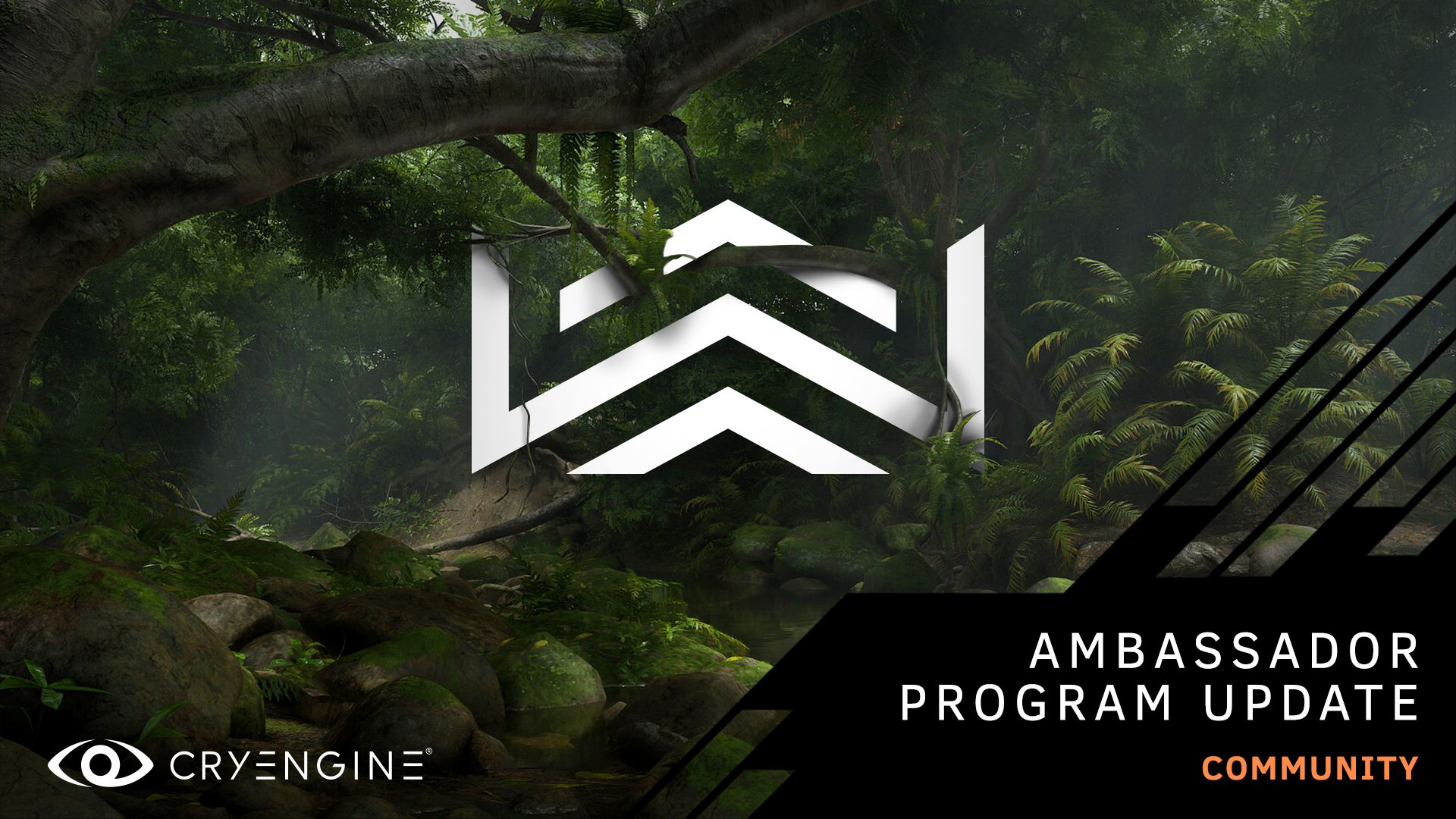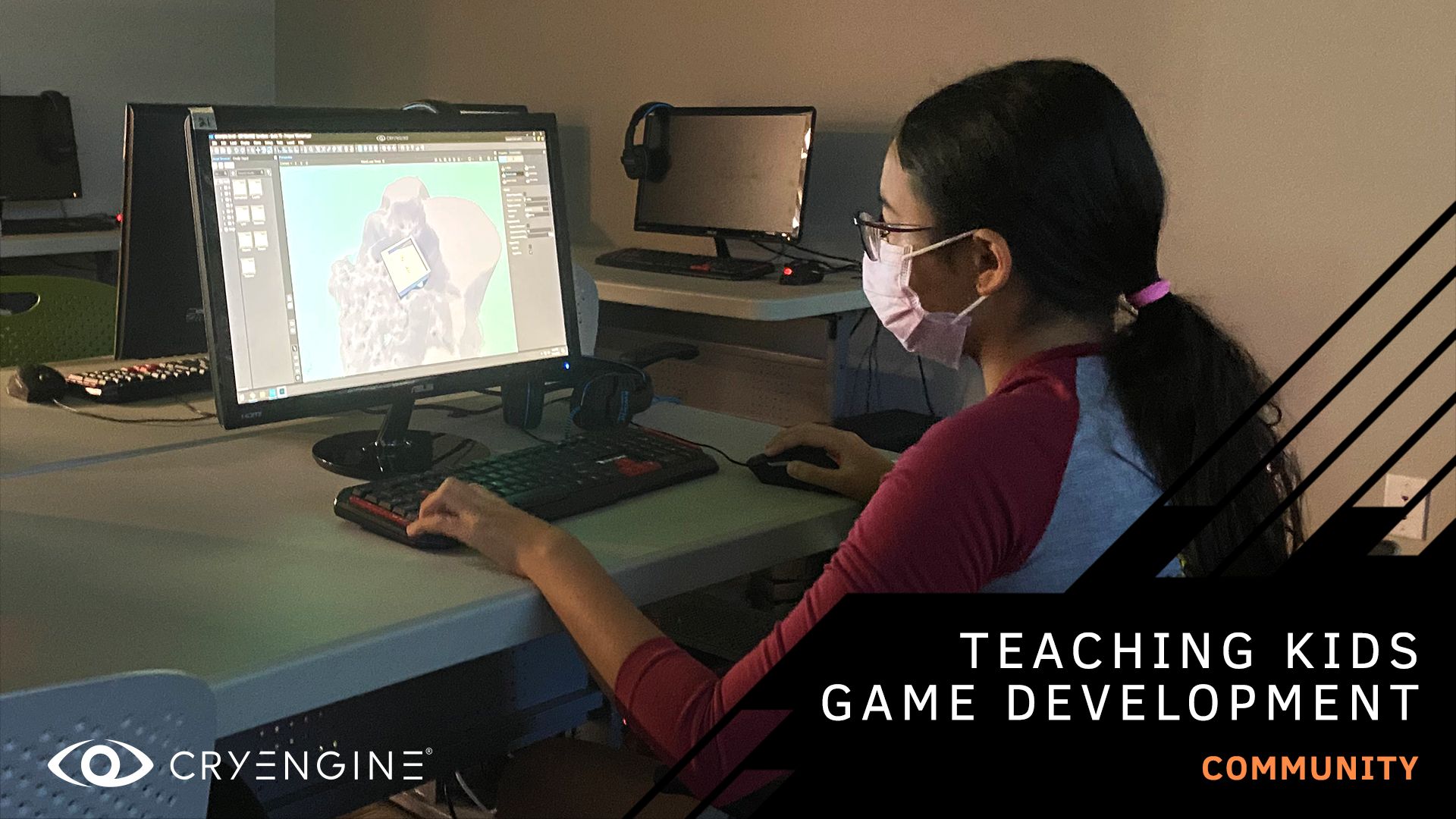
Teaching game development to kids with CRYENGINE
We speak to Omar Ocasio from the CRYENGINE community, about his rewarding experience teaching kids game development with our engine.
Omar Ocasio, CEO of Valkyrie Game Studios based in Fresno, California, is a well-established member of our CRYENGINE community. He shared his passion for our engine and game development by teaching kids aged 10 to 17 how to make games. Omar set up a week-long course, where students learned for five hours a day in a socially distanced class, for innoved, a Science Technology Engineering and Math academic enrichment center. We spoke to Omar about how his students got on. Can kids learn CRYENGINE? Find out below…

Hey, Omar! Thanks for joining us. So what’s your background with CRYENGINE?
My history with CRYENGINE goes all the way back to the first CRYENGINE SDK. Back then, it was more of a hobby, but since CRYENGINE V, I have been actively working with the engine properly. So, I would say roughly 18 years!
How did you get involved with the CRYENGINE community?
At first, I was involved with the older CRYENGINE forums. Since then, I have been helping others with the GameSDK. Once CRYENGINE relaunched the website and launched the official CRYENGINE Discord channel, I joined to keep up with the latest news and help others with issues.
Why did you choose CRYENGINE for this class?
Well, for me, it was no brainer! I have seen a ton of classes being taught for UE4 or Unity, but not for CRYENGINE. So, I took this chance to introduce young kids to another great game engine. And since CRYENGINE V, it is easier to get into CRYENGINE than ever before.
What was the syllabus?
My class syllabus was broken down into animating, programming, sound design, 3D modeling, UI design, and mocap. Every day we spent five hours on each of those subjects, learning with programs like 3D Max, Motion Builder, Photoshop, Flash for UI, Visual Studio for programming, and Substance Painter for texturing our models. It was a lot to take in at first, but I wanted each student to find out which one of those fields they found most interesting.The students started by picking a third person template and then used GameSDK assets to quicken the process of getting objects into the world. Then they created basic things for their game, for instance, weapons, animations for which they did both the key animations and mocap, and programming simple game mechanics like player health. They also designed their own maps, which they had a blast doing!

How did the students get on with CRYENGINE?
They picked it up really, really fast. It actually surprised me! They were able to understand the engine well. For example, when it came to 3D modeling, they quickly understood the process of importing an asset into the engine and seeing it update in real-time, then making changes to it as needed, and re-importing it. It amazed me how well these students picked it up!
Were you surprised by any of their work?
Oh, man, everything! Some aspects were harder to learn but, regardless, they kept at it, and never gave up. They did great on the programming and map design sections of the class. Most of the time, they would ask a question like, “how do I do this or that?” and once I showed them and taught it, they just built from there and created a lot of interesting stuff.

Did the students enjoy it?
Yes, they really did. Once the students were finished with the class, we ended up with a prototype game that they played together. They all laughed together at what they had created and how the game worked out. It was perfect.
What features did they find most useful?
The students all got on well with the Designer tool and Character tool. They loved how easy it was to whitebox an area, and with the Character tool, they had fun seeing the animations and learning how to set up the character with attachments, then just jumping right into the game from the sandbox to test it out. They also loved how easy CRYENGINE lighting was for them to set up. For most other engines, I know that’s a hard part, but when the students learned about Global Illumination, they had a blast adjusting and tweaking the settings until it looks just right. Plus, they also enjoyed the Particle system, although they kind of went overboard a little and crashed some of the computers!
What advice would you give to people starting with CRYENGINE? Or people thinking about teaching a course?
My main tip for beginning with CRYENGINE is to start simple. With my students, we began with a simple idea and then learned each thing about the engine to understand how to get the ideas to work. Doing it this way will allow you to do more complex stuff down the road. As for teaching, well, it isn’t easy for sure, but it’s a great way to test your own skills. Sometimes your students come up with questions or problems that you didn’t know about, which in turn help you. It is a great experience for sure, and I had a great time teaching and learning with my students.
Cheers Omar!
If you’re learning CRYENGINE, head to our YouTube channel for a range of tutorials about game design and using our engine. Get all the latest updates about CRYENGINE on the forum, or via Facebook and Twitter. You can ask questions, pick up tips and tricks, and more by joining our community and the CRYENGINE development team over on our official CRYENGINE Discord channel. If you find a bug in the engine, please report it directly on GitHub, which helps us to process the issue quickly and efficiently.
Are you looking for your next career move? At Crytek, we value diversity, and we actively encourage people from all kinds of backgrounds and experience levels to apply to our open positions, so join us over at LinkedIn and check out our careers page.



